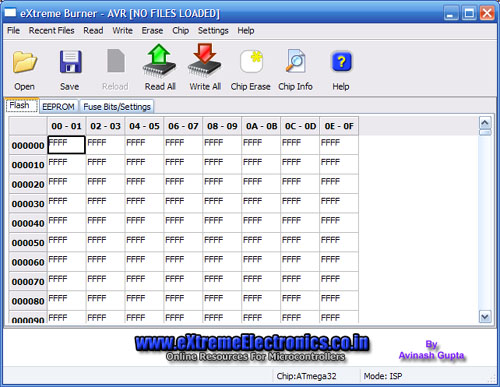

- #ATMEL SPI PROGRAMMER SOURCE CODE MAC OS#
- #ATMEL SPI PROGRAMMER SOURCE CODE DRIVERS#
- #ATMEL SPI PROGRAMMER SOURCE CODE UPDATE#
- #ATMEL SPI PROGRAMMER SOURCE CODE CODE#
- #ATMEL SPI PROGRAMMER SOURCE CODE SIMULATOR#
#ATMEL SPI PROGRAMMER SOURCE CODE MAC OS#
Configuration software available for Windows, Mac OS X, and Linux.Works with standard AVR programming software, including Atmel Studio, AVRDUDE, and the Arduino IDE.Emulates an STK500 programmer through virtual COM port interface.Connects to a computer through USB via a USB A to Micro-B cable (not included).Many of the pictures in this user’s guide show a specific version of the programmer, but both versions have the same size and pinout, so you can refer to the pictures to learn about your programmer even if you have a different version from what is shown. This guide often uses the designation “Pololu USB AVR Programmer v2.x” to refer to both versions at the same time. Unless otherwise specified, the information in this guide applies to both versions.

This guide covers both the Pololu USB AVR Programmer v2 (Pololu item #3170) and the Pololu USB AVR Programmer v2.1 (Pololu item #3172). This programmer is designed to work well with both 3.3 V and 5 V devices, and it can even be configured to provide power to the target device in low-power systems. It can also be used to update, replace, or remove the bootloader on Arduino boards and our Arduino-compatible A-Star 32U4 controllers. It is a good solution for programming AVR-based controllers like our A-Star 328PB Micro and Orangutan robot controllers. The programmer provides an interface for transferring a compiled AVR program from your computer to the target AVR’s flash memory, allowing it to run the program. The Pololu USB AVR Programmer v2 and the Pololu USB AVR Programmer v2.1 are compact, low-cost in-system programmers (ISP) for AVR microcontrollers from Atmel (now a part of Microchip). Pololu USB AVR Programmer v2 or v2.1 with included hardware. Reading and writing from EEPROM and flash 5.9.

Troubleshooting AVR programming issues 5.7. AVR programming using the Arduino IDE 5.5. Faster programming with F5 in Atmel Studio 5.3. AVR programming using Atmel Studio 5.2.1.
#ATMEL SPI PROGRAMMER SOURCE CODE DRIVERS#
Installing Windows drivers and software 4.2. If(cSetup != 0x55 || cSetup != 0xAA)ĭf_erase(0) // Sector = 0…511 = 512 sectors per 4096 bytesYou can also view this document as a printable PDF.ġ. execution speed) we provide only the bare necessities.Įxtern void df_write_open(uint32_t addr) Įxtern void df_read(uint8_t *buf, uint16_t size) Įxtern void df_write(uint8_t *buf, uint16_t size)
#ATMEL SPI PROGRAMMER SOURCE CODE CODE#
Using the existing basic functions, it is possible to extended the code to support an extensive file access system, but for the sake of better performance (i.e. Reading and writing data is accomplished in a fairly simple fashion, basically by providing a read/write address (0 to 0x1FFFFF) and data length information. For further detailed information, please refer to the AT45DB161D data sheet. Note: In order to over-write existing data, you need to erase the corresponding block first. Even though the chip offers a variety of erasing options, our software library supports Block Erase, with one block containing 4 Kbytes. The total of 2,097152 bytes (0x1FFFFF) are organized in 4096 pages with 512 bytes per page. The Atmel® AT45DB161D is a 16-megabit (2 MByte) 2.5V or 2.7V, serial-interface sequential access Flash memory ideally suited for a wide variety of program code- and data-storage applications. This page applies to programming the LandTiger LPC12768 Development Board and the Copperhill jBoard-X2.
#ATMEL SPI PROGRAMMER SOURCE CODE SIMULATOR#

#ATMEL SPI PROGRAMMER SOURCE CODE UPDATE#


 0 kommentar(er)
0 kommentar(er)
